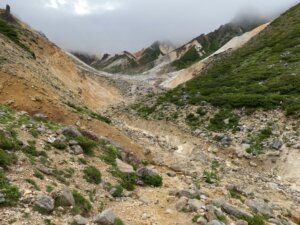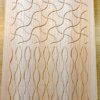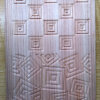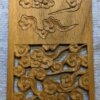How to carve patterns Part 9 ~Yamajimon and Misujidate~
In this session, we’ll be carving patterns made purely of straight lines, using just a sharp chisel (Kiwa-tou). These two patterns—Yamajimon and Misujidate—are ideal for refining your control when carving straight lines.
Tool Used
-
Sharp chisel (Kiwa-tou)
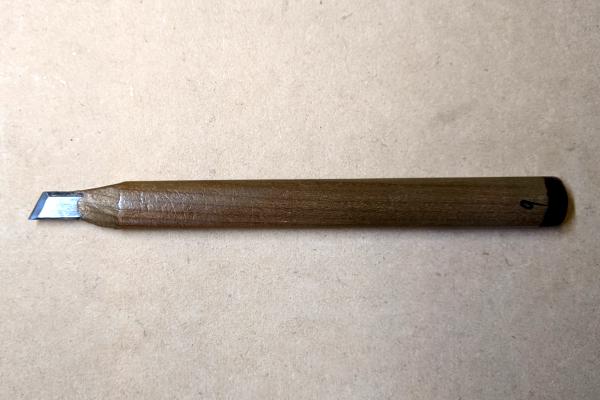
About the Patterns
Yamajimon (山路文)
"Yamajimon" is a pattern made of zigzag lines, evoking the steep path of a mountain trail.
A perfect study in rhythm and symmetry.
Misujidate (三筋立て)
"Misujidate" is a striped pattern made up of sets of three parallel lines.
Simple in appearance — but surprisingly tricky to get clean.


Preparation
Use carbon paper to transfer Yamajimon and Misujidate onto a postcard-sized wooden board.
This time, only trace the parts to be cut, as described in each section below.
You can download the template here: [PDF of Yamajimon and Misujitate].
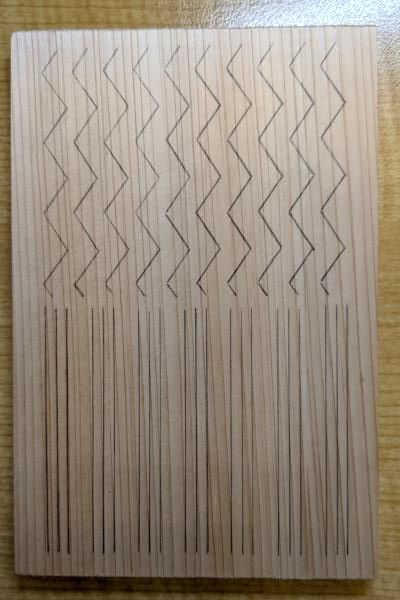
1. How to carve Yamajimon
Step 1: Make the Cut
Use the sharp chisel to make a cut along the red line, which marks the left edge of the black zigzag line.
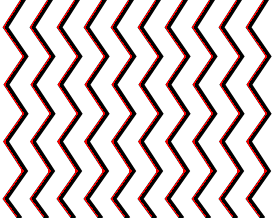
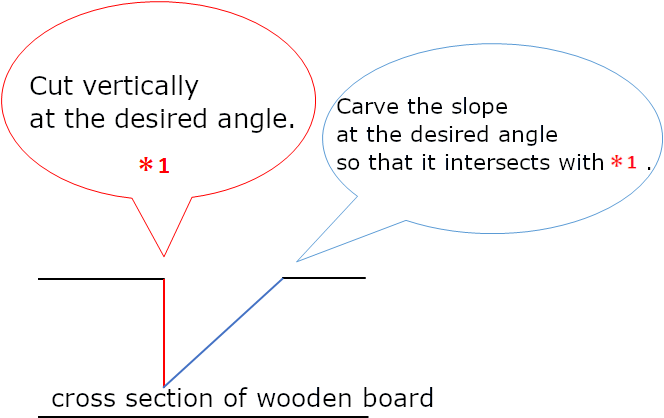
Step 2: Carve the Slope
Then, carve the black line into a slope that intersects with the cut.

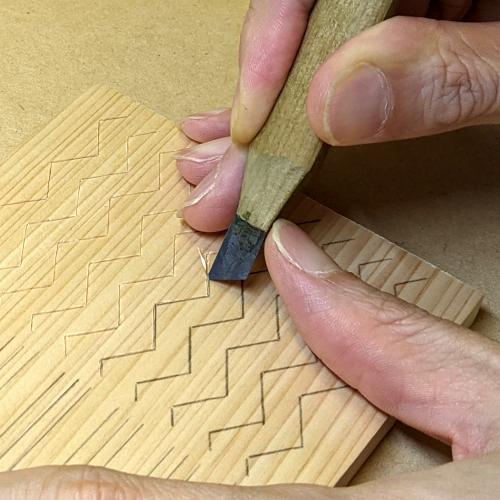
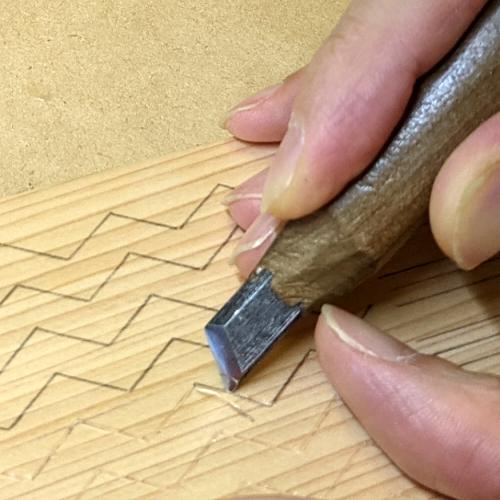
Focus on keeping the zigzag points and straight lines clean and sharp.
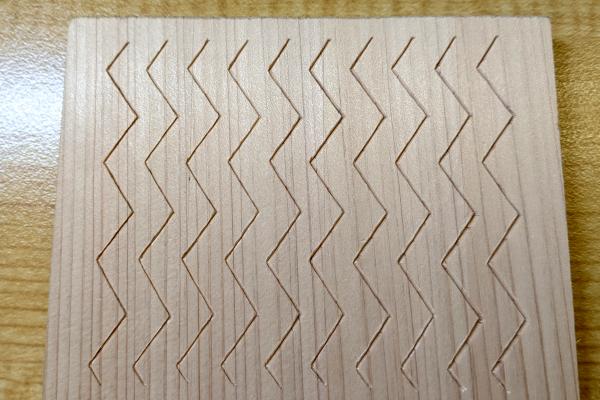
2. How to carve Misujidate
Step 1: Make the Cut
Use the sharp chisel to make a straight cut along the red line (this lies at the center of each black line group).
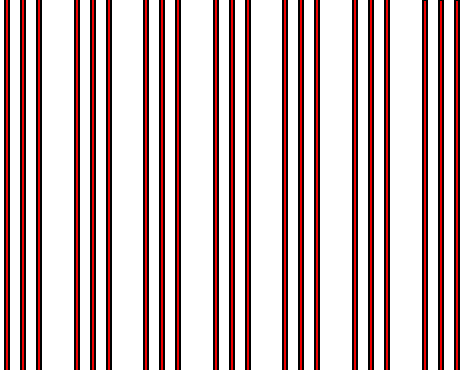
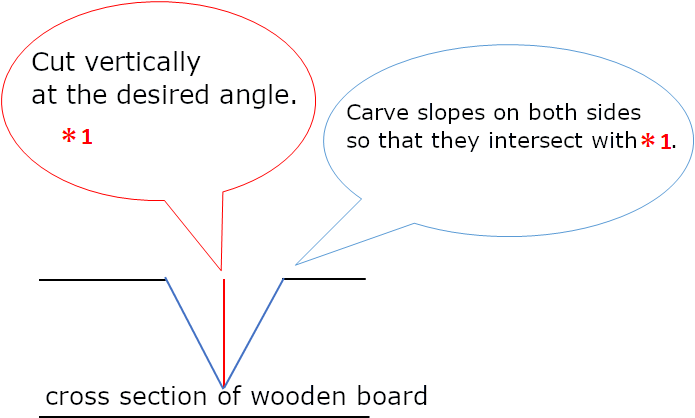
Make a straight cut,
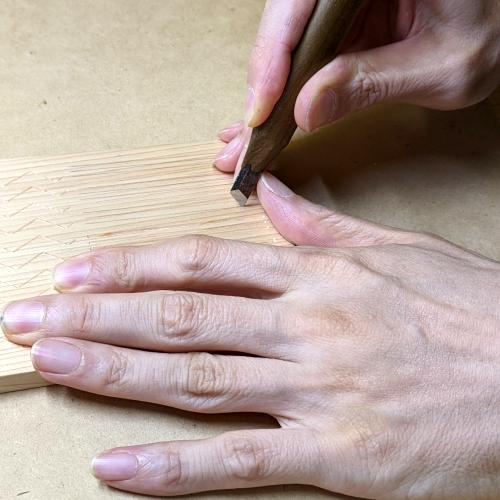
Step 2: Carve the Slopes
Next, carve slopes on both sides of the cut along the black lines so that they intersect cleanly with the central incision.
While Misujidate may look simple, it demands precision. From the moment your chisel touches the wood, stay focused and fully engaged.
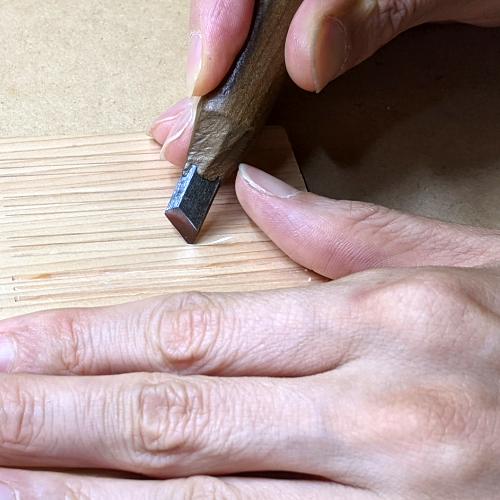
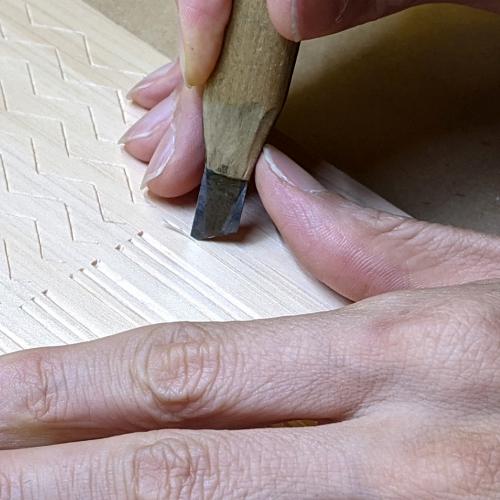
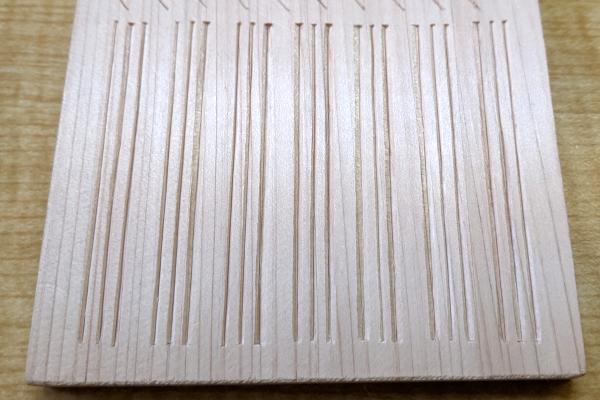
How to carve patterns
- From the lattice to the scales
- Raimon
- Asanoha and Sayagata
- Seigaiha and Sippo-Tsunagi
- Higaki and Kumikikko
- Mimasu-Tsunagi and Mimasu-Chirashi
- Ryusui
- Bundo-Tsunagi and Tatewaku
- Yamajimon and Misujidate ←Current page displayed
- Kemanmon and Gobosei
- Chidori and Chidori-Goshi
- Nejiume (Twisted plum)
- Kikubishi and Yaegiku
- Ichimatsu and Sankuzushi
- Kikko and Yagasuri
- Clouds
- Waves


